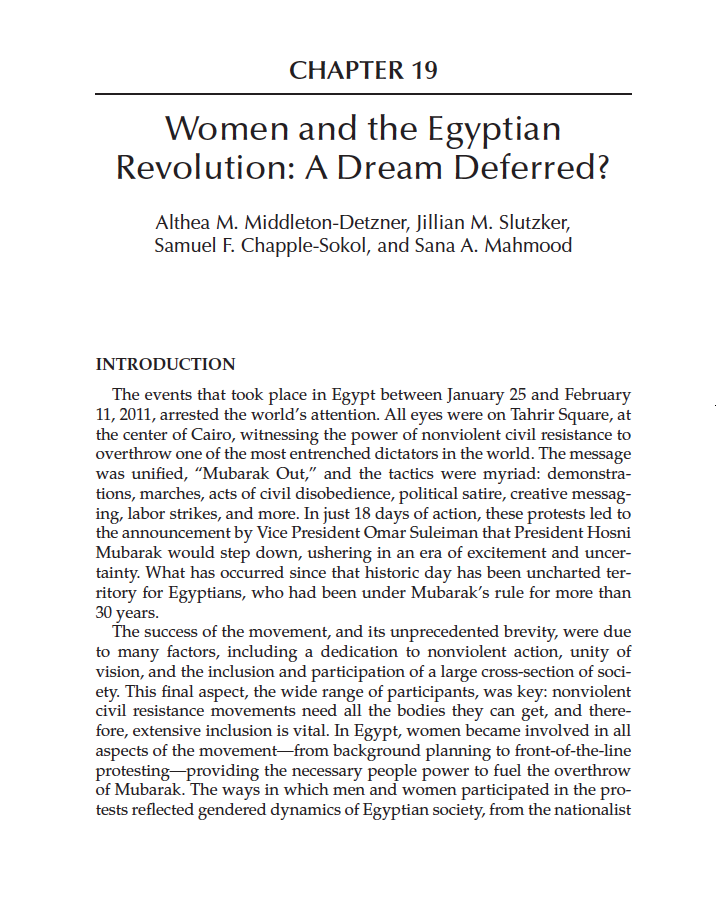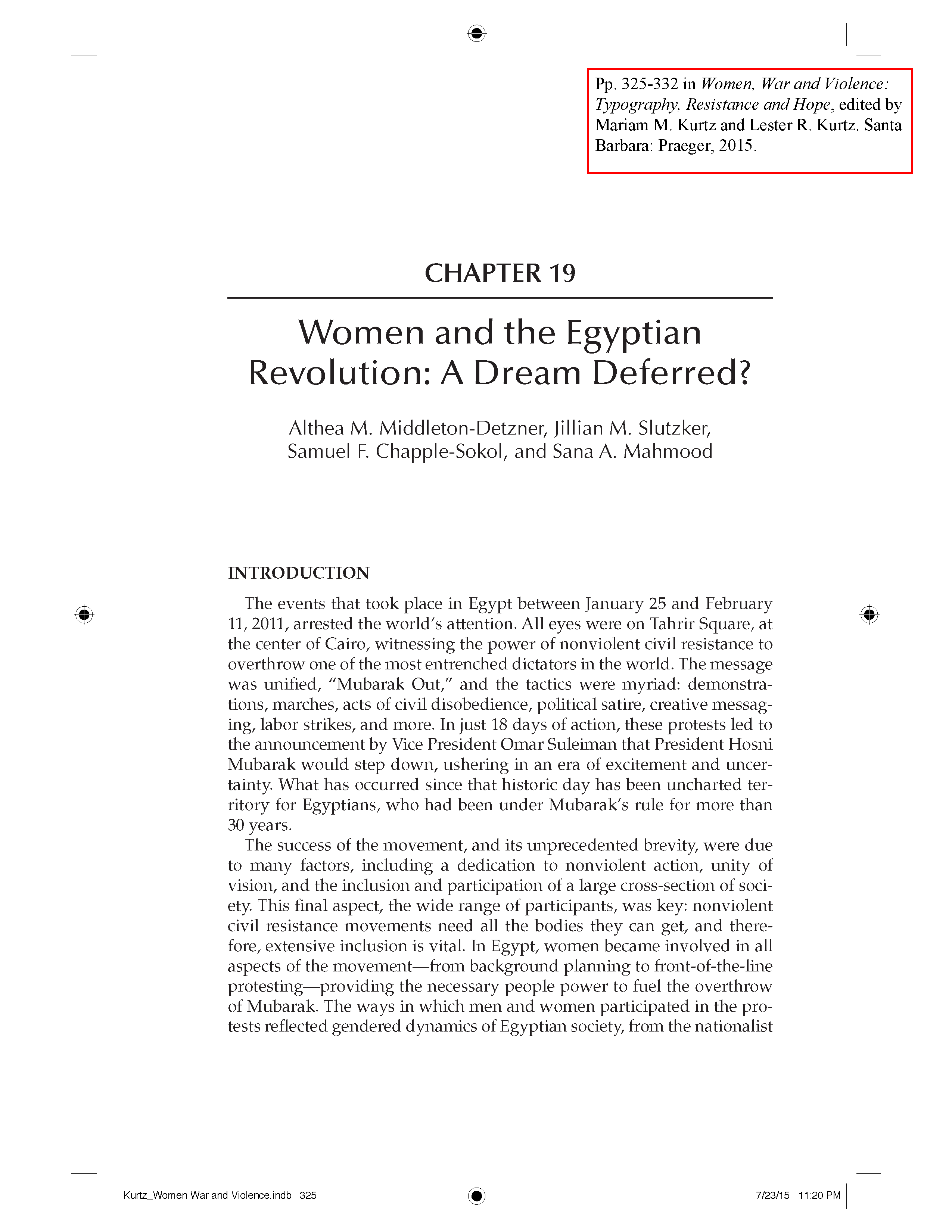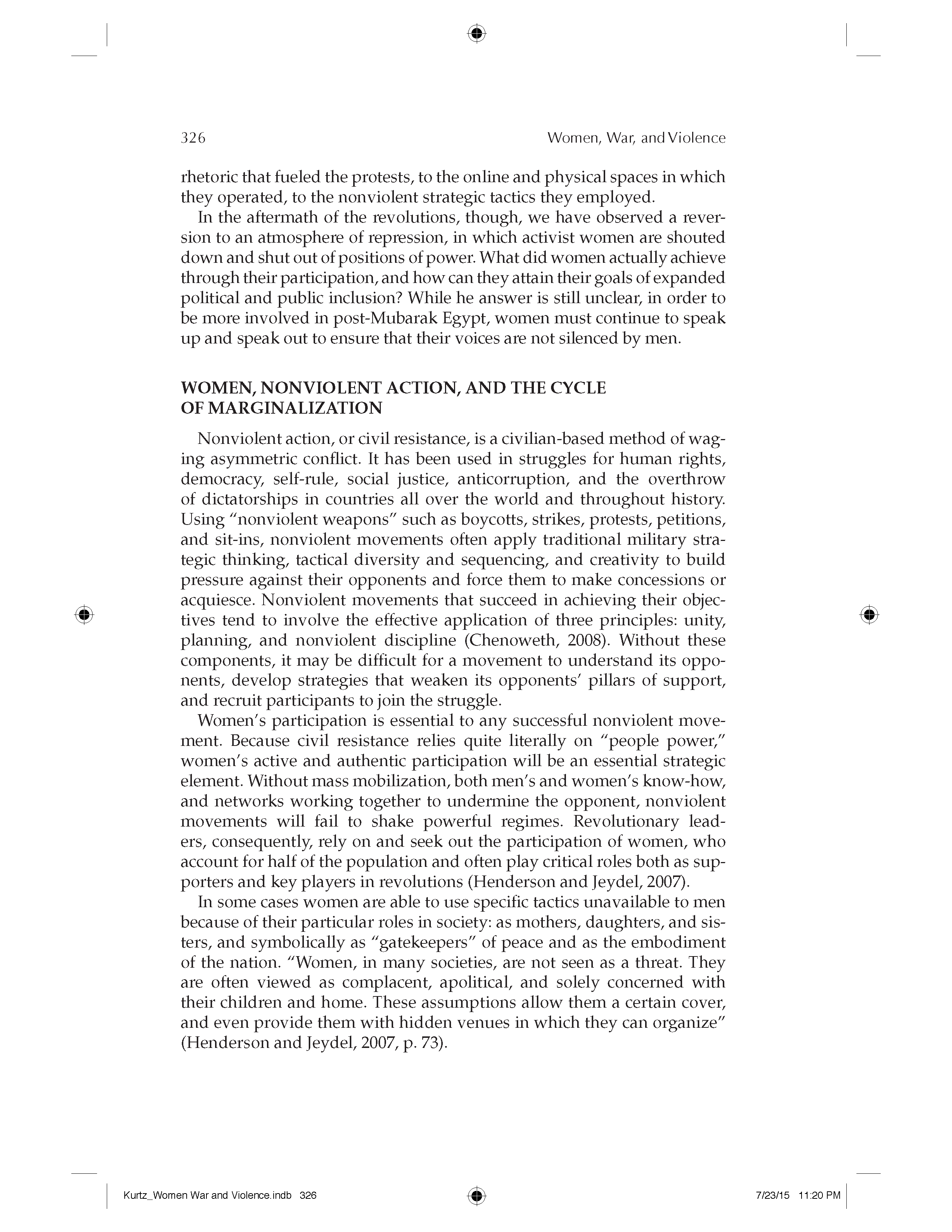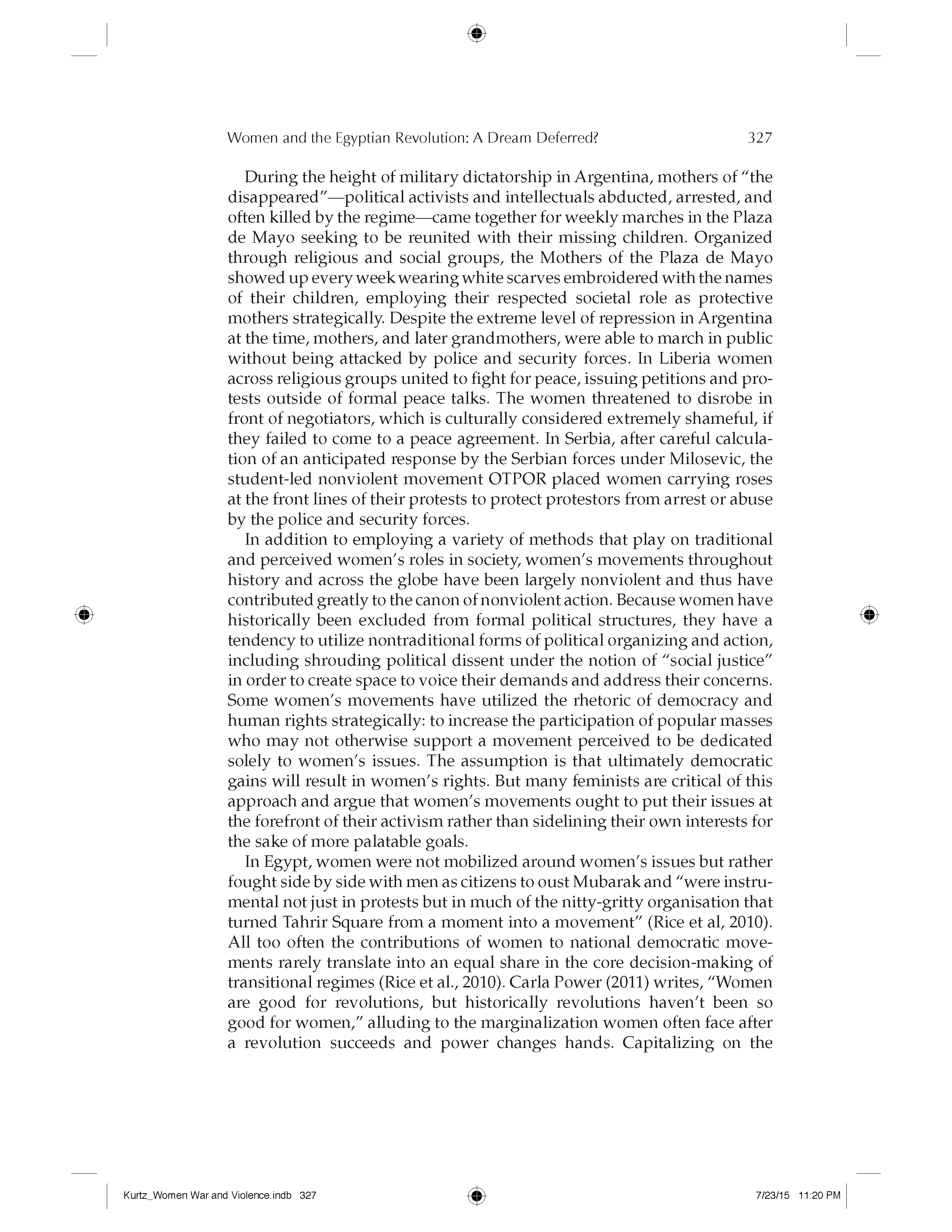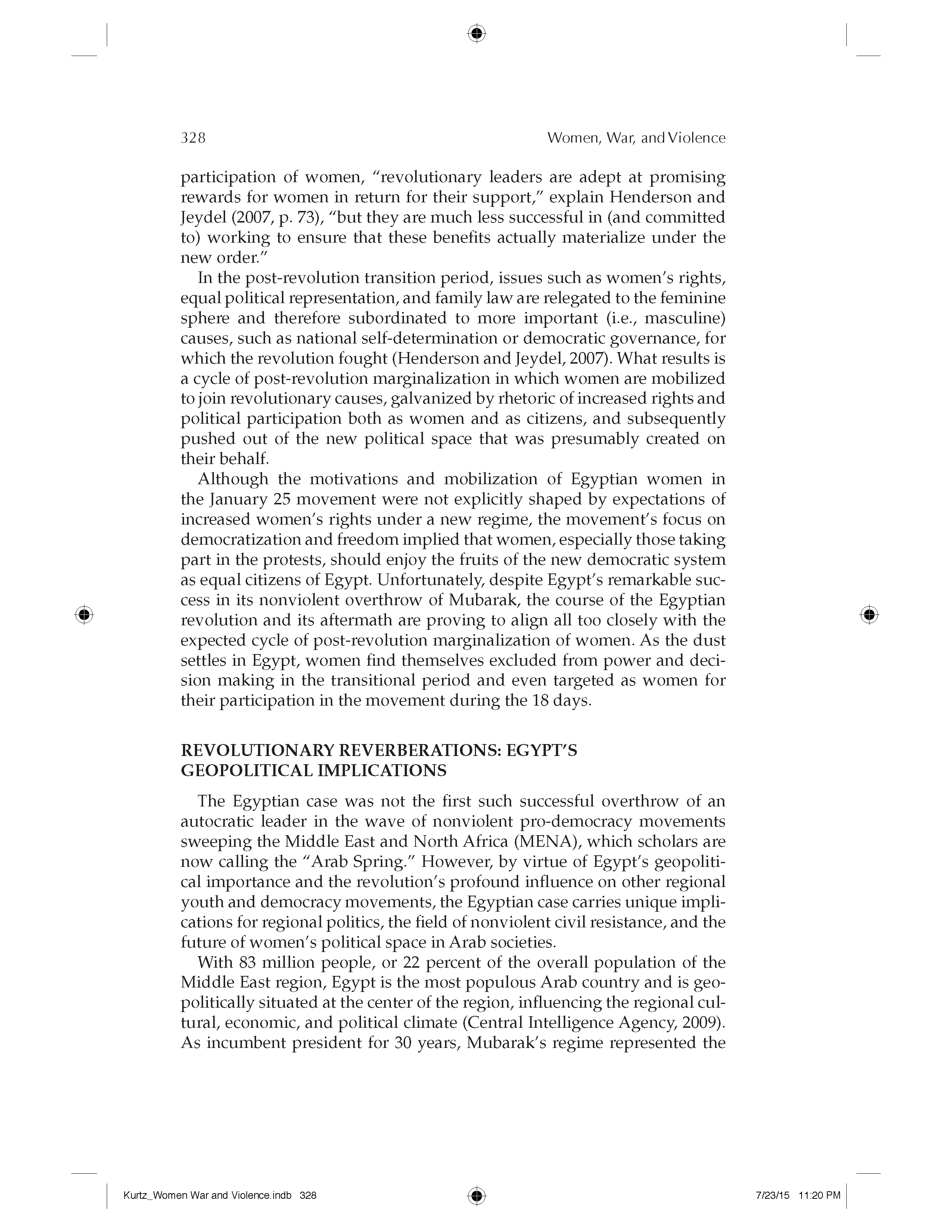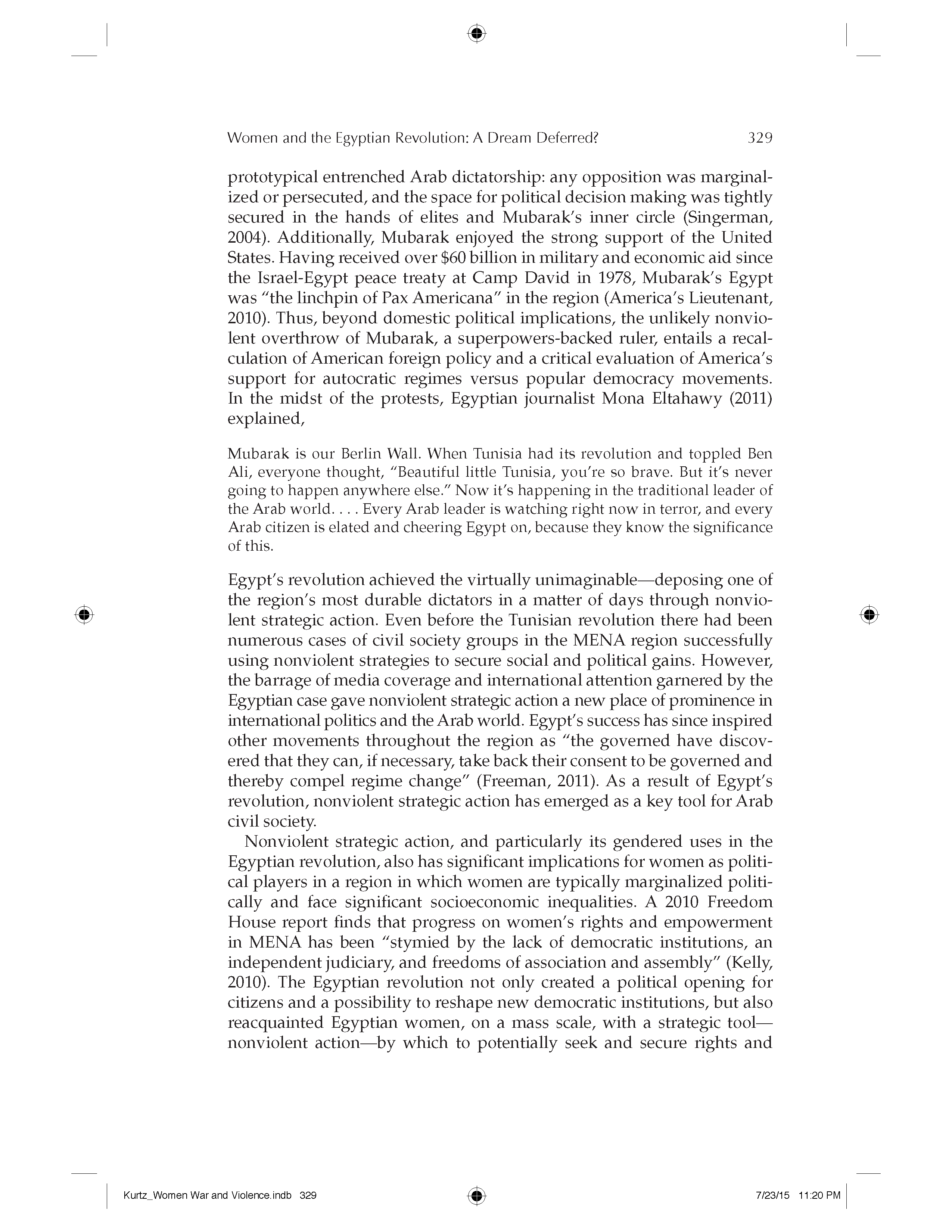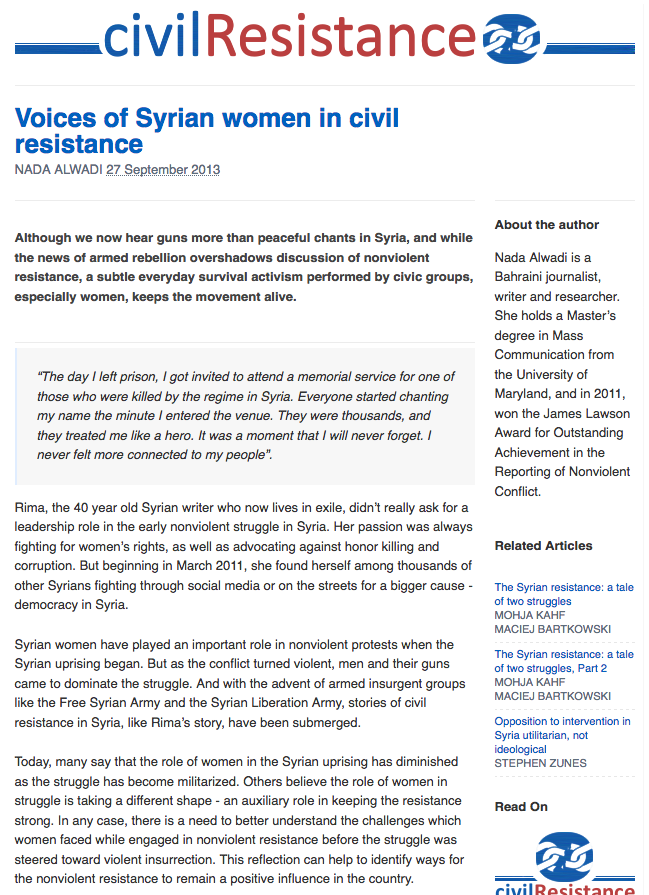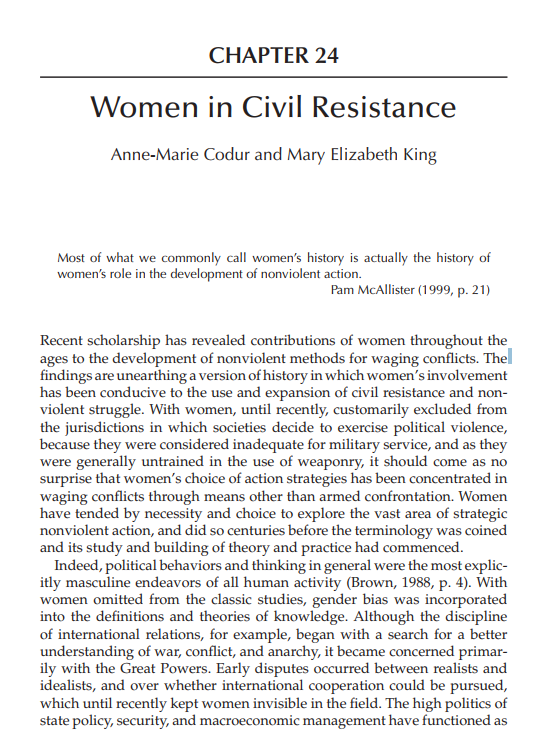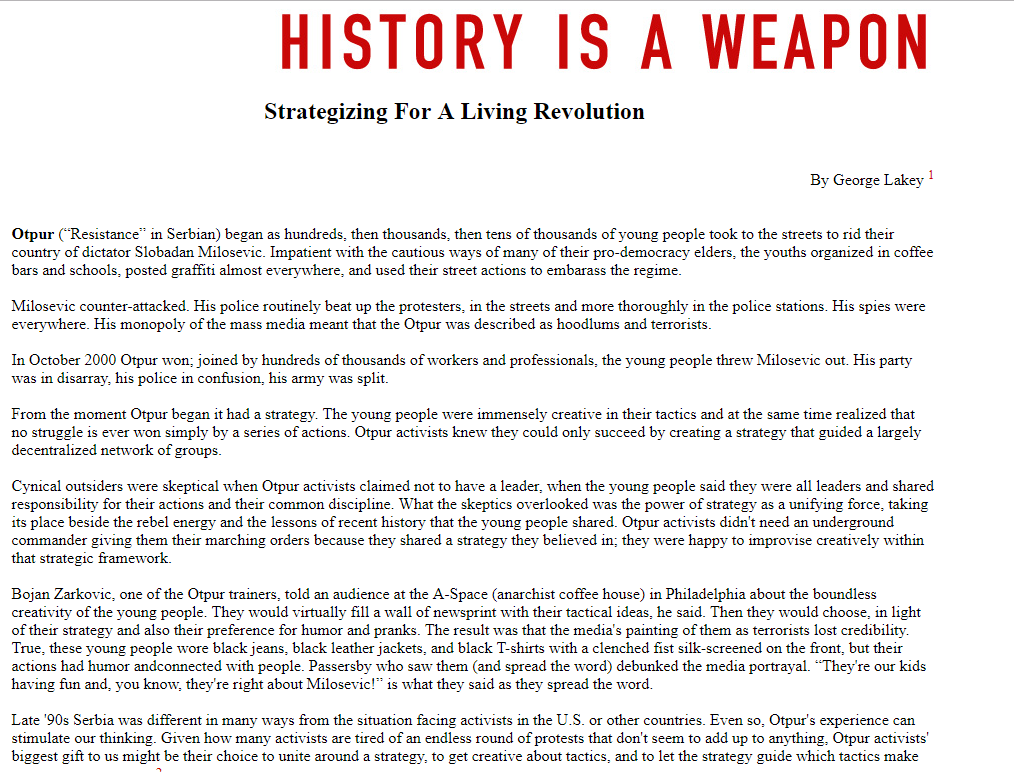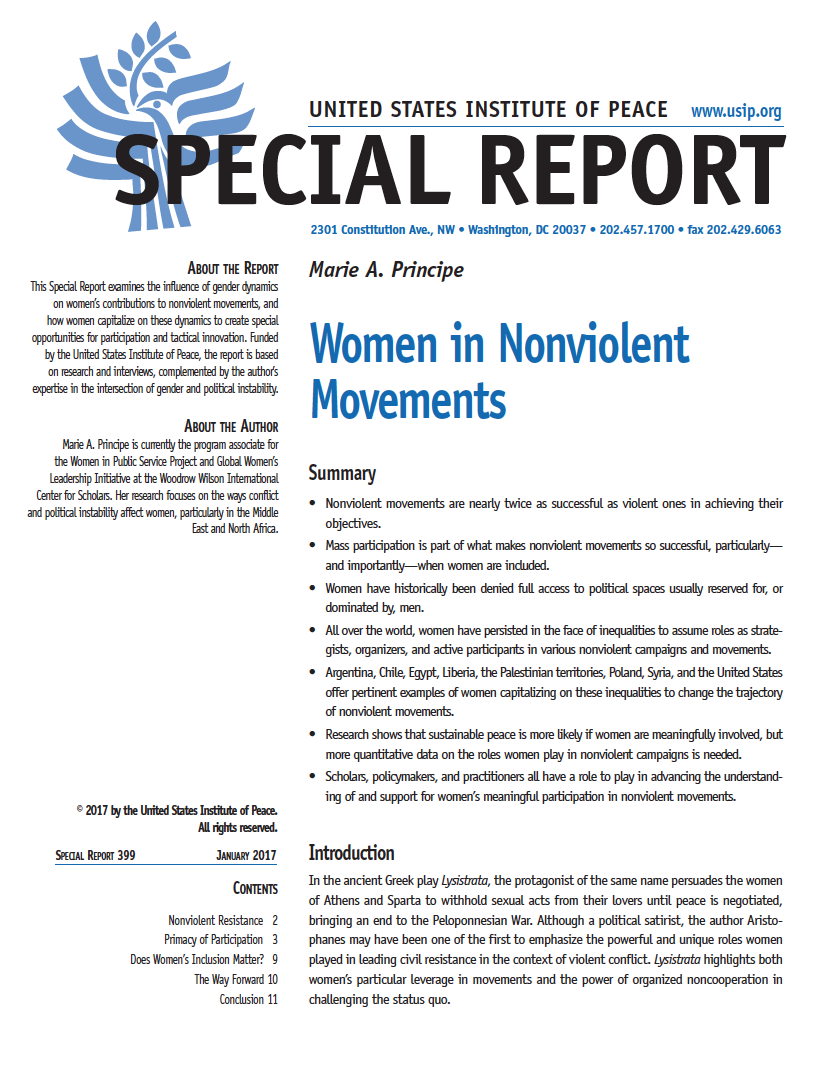Women and the Egyptian Revolution: A Dream Deferred?
The events that took place in Egypt between January 25 and February 11, 2011, arrested the world’s attention. All eyes were on Tahrir Square, at the center of Cairo, witnessing the power of nonviolent civil resistance to overthrow one of the most entrenched dictators in the world. The message was unified, “Mubarak Out,” and the tactics were myriad: demonstrations, marches, acts of civil disobedience, political satire, creative messaging, labor strikes, and more. In just 18 days of action, these protests led to the announcement by Vice President Omar Suleiman that President Hosni Mubarak would step down, ushering in an era of excitement and uncertainty. What has occurred since that historic day has been uncharted territory for Egyptians, who had been under Mubarak’s rule for more than 30 years.
The success of the movement, and its unprecedented brevity, were due to many factors, including a dedication to nonviolent action, unity of vision, and the inclusion and participation of a large cross-section of society. This final aspect, the wide range of participants, was key: nonviolent civil resistance movements need all the bodies they can get, and therefore, extensive inclusion is vital. In Egypt, women became involved in all aspects of the movement—from background planning to front-of-the-line protesting—providing the necessary people power to fuel the overthrow of Mubarak. The ways in which men and women participated in the protests reflected gendered dynamics of Egyptian society, from the nationalist rhetoric that fueled the protests, to the online and physical spaces in which they operated, to the nonviolent strategic tactics they employed. In the aftermath of the revolutions, though, we have observed a reversion to an atmosphere of repression, in which activist women are shouted down and shut out of positions of power. What did women actually achieve through their participation, and how can they attain their goals of expanded political and public inclusion? While he answer is still unclear, in order to be more involved in post-Mubarak Egypt, women must continue to speak up and speak out to ensure that their voices are not silenced by men.
In Women, War and Violence: Typography, Resistance and Hope, 2015, pages 325-332
Editor (edited volume): Mariam M. Kurtz and Lester R. Kurtz
Santa Barbara: Praeger — 2015
